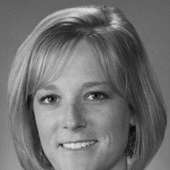- Practices to promote daytime calving (1/17/13)
- Agricultural educational events to be offered (12/27/12)
- Census of Agriculture provides snapshot of farmers and ranchers across the country every five years (12/6/12)
- Proper care needed to maintain effectiveness (11/15/12)
- Does patch burning offer advantages? (10/4/12)
- Southwind 4-Hers get reserve champ honors (9/11/12)
- Educational opportunities available for farmers, ranchers (8/23/12)
Agriculture and 4-H erosion reduction in pastures
Thursday, September 13, 2012
While attending the Bressner Pasture Field Day last week, Dale Kirkham of the Kansas Rural Center spoke about ways to reduce soil erosion in pastureland. This article was adapted from the proceedings and used with Kirkham's permission.
Pastures are primarily managed for abundant forage production and good livestock performance. But other benefits from properly managed pastures include clean runoff water, habitat for wildlife, carbon sequestration and scenic views.
Soil erosion is a natural process and generally not a major concern in pastureland. However, certain activities by cattle and ranchers can accelerate the process resulting in gullies started by ruts that concentrate water flows. Cattle trailing, ranch roads and feeding during wet periods are high on the list of activities that subject the sod to erosion damages.
Cattle are creatures of habit and commonly "trail" to water, salt and mineral feeders and shade which can form paths that lead to gullies. Gullies also start along fences where stocker cattle travel steadily during the first few days after turnout. Where small gullies have started along fences, cattle paths and pasture roads, placing short "kickout" berms of earthen fill will divert concentrated runoff onto good sod.
Where cattle trail along fences, short stub fences can be installed to direct their movements toward the center of the pasture, especially on steeper slopes.
Even those unwanted osage orange (hedge) trees can be cut and placed to direct cattle traffic.
What about healing actively eroding gullies? The key is to slow the flowing water in the channel if it cannot be diverted away. Starting at the upper end of smaller gullies, place available materials such as used net wrap held by rocks or tree branches at intervals to slow water flow and trap sediments. Annual grasses and weeds will soon establish and eventually be replaced by native species. Larger gullies often require structures made of rock or earthen fill designed by an engineer to be fully effective.
Pasture roads can also lead to gullies as repeated vehicle traffic, especially during wet times and on steeper slopes, breaks the sod cover and forms ruts.
Negative impacts can be reduced by following the contour of the land and altering routes whenever possible. Also, use lightweight vehicles with broad tires such as ATVs and UTVs (utility task vehicles) if available and suitable to the task.
Winter feeding sites are another source of sediment, minerals and bacteria in runoff.
Moving feeding locations to new areas often will alter traffic patterns, reduce spot damage to the sod and encourage cattle to consume dormant forage in lightly used areas of the pasture. Feed in open areas away from ponds and streams during suitable weather while saving sheltered spots for extreme conditions. Feeding supplements in larger amounts just two to three times per week will also reduce vehicle traffic.
Spring burns that remove both the standing dead material and the surface layer of mulch leave the soil vulnerable to sheet and rill erosion until new plant growth is sufficient to provide protection. Whenever possible, burn native pastures when the soil and mulch layers are moist in order to leave a protective layer on the soil surface. In the patch burn-patch graze system, the higher rates of sheet and rill erosion that may occur in the heavily grazed third of the pasture are likely offset by greater protection in the remaining two-thirds.
Remember that maintaining good grass and mulch cover will slow runoff, trap sediments and increase infiltration, thus, being rule No. 1 in reducing soil erosion in pastures. Rule No. 2 is to minimize livestock and human activities that lead to concentrated flows of runoff.
***
Don't forget about the cow calf workshop on Tuesday, Sept. 18, at Function Junction, south of Erie, Kan. Topics to be covered are cattle drought concerns, bovine trichomoniasis, and neospora abortions.
The complimentary meal and program will begin at 6 p.m. For more information and to register, please contact SEK Genetics at 1-800-443-6389.

